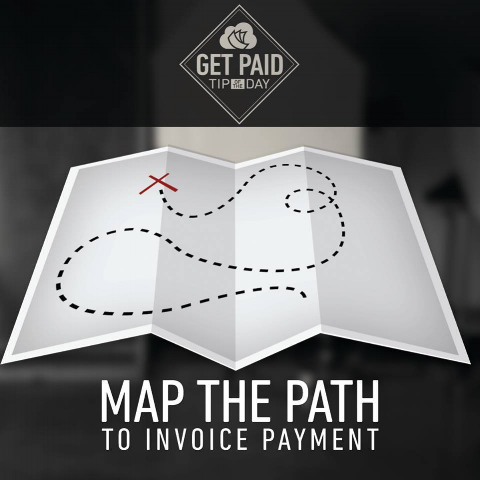What we think of as a customer is almost never a lone human. Customers are organizations, sometimes very complex organizations with more moving parts than are under the hood of your car (and sometimes more than are in a jumbo jetliner). Your contact, the one you have a great relationship with, the one you deal with daily--well there's a good chance that's not the person actually paying your bill.
That's why you need to know the path to payment. Your invoice goes on a journey where it is transformed from a pretty piece of paper to money in your bank account. To be truly successful in managing your accounts receivable, you need to get to know that path, its pitfalls and its warm sunny spots.
Where to Start
Ideally, your standard contract should require your customer to list the billing contact, including their name, email address and phone number, as well as similar information for an escalation point in case there's an issue. If your contract doesn't already have that section, by all means, put it in there! Customers almost never object, and it really cuts down on confusion.
But here's the thing, even if you have a billing contact, you should take the time to ask for the IDEAL billing contact. Even if you've been sending invoices to the same contact for 20 years, it never hurts to ask. You might be amazed at the answer you get. "Yeah, I forward those over to Lonnie for payment when I have a chance. Never understood why you guys sent them to me in the first place." Well, now you know.
On rare occasions, you may have no contact whatsoever at the company (e.g., if your main contact has left the company). If that's the case, call whatever main number you can find and ask who handles accounts payable. If you can, get their name, email and phone number from whoever answers the phone. A/P people are notoriously busy and often don't answer on the first try. If you have the direct contact info you can try back again later without the intermediary.
Map the Happy Path
That first contact is only the starting place. Your next task is to find out as much as you can about how an invoice gets processed for payments. Questions might include:
- Does anyone have to approve the invoice? If so, who? Should they get the invoice first?
- Should different kinds or sizes of invoices go different places? Should someone be cc'd on the invoice?
- Who actually enters the invoice for payment? Are there specific pieces of information they require like a P.O. number or a W-9? Is a specific invoice format required?
- How often are checks cut? If you are interested, ask them whether they offer ACH as a payment option and what information they would need to pay by ACH.
Troubleshooting
Next, you need to find out who to go to if the ideal, "happy path" process fails. These are your escalation points. Again, ideally this is spelled out in your contract, but if not, there are a couple of likely candidates, including your direct contact who orders or receives your work and anyone who you've discovered is an approver of your invoices.
A light touch is best here. If you find your invoice is stuck, or if your normal contacts are not responding after a reasonable number of attempts, reach out to your escalation points and explain the issue in a neutral manner: "I'm having trouble tracking down the status of my invoice. Can you help me?"
If they try to route you back to a non-responsive contact, politely explain that you've tried that a number of times and it has not worked. Ask for an alternate contact, and be sure to get the full name, email and phone number, so you don't have to bother your escalation point again.
Regardless of the outcome of the conversation, always ask them if there is a better contact you should ask next time you have an issue. It's best not to wear out your welcome!
Don't Forget to Say Thank You
Accounts payable, like accounts receivable, can be a thankless job. Take the time to thank your counterpart for all their hard work, especially if they helped you overcome a problem. They just might just pick up the phone a bit faster next time you call.

